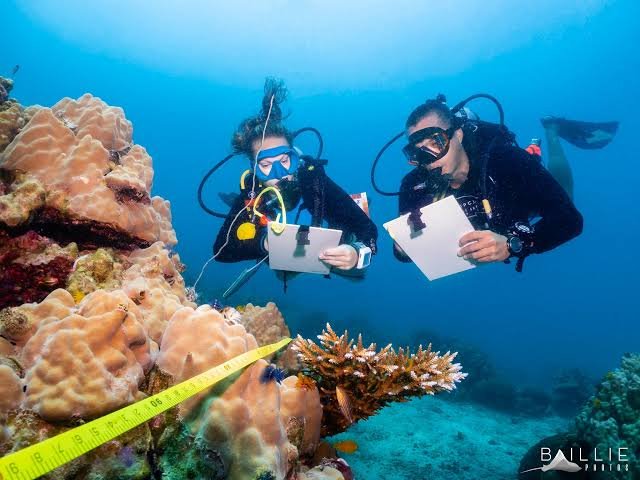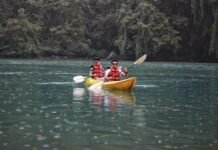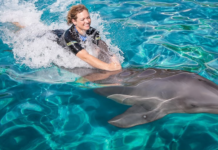Last Updated on November 10, 2023 by Asfa Rasheed
Koh Tao, often referred to as the “Turtle Island,” is not just a picturesque paradise for travelers but also a haven for divers. With its crystal-clear waters, abundant marine life, and vibrant coral gardens, it’s no wonder that thousands flock to this Thai island annually, eager to explore its underwater wonders. However, beneath the waves, a silent crisis is unfolding. Coral reefs, the very heart of marine biodiversity in Koh Tao, are facing unprecedented challenges. This article delves into the commendable efforts being made to restore these vital ecosystems and how divers are playing a pivotal role in this noble endeavor.
The Importance of Coral Reefs
Role in Marine Ecosystems
Coral reefs are often dubbed the “rainforests of the sea.” They house approximately 25% of marine species, despite occupying less than 0.1% of the world’s ocean surface. These intricate structures, built over millennia by tiny coral polyps, provide shelter, breeding grounds, and feeding areas for a plethora of marine organisms, from the tiniest plankton to the majestic whale shark.
Economic Significance
Beyond their ecological value, coral reefs are economic powerhouses. Koh Tao, like many coastal regions, relies heavily on its reefs for tourism and fisheries. Diving tourism, in particular, has seen a boom over the years, with dive shops, resorts, and related businesses contributing significantly to the local economy. Furthermore, healthy reefs act as natural barriers, reducing wave impact and preventing coastal erosion, thereby saving millions in potential damages.
Aesthetic and Cultural Value
For the local communities of Koh Tao, the coral reefs are more than just an economic asset. They are a source of pride, a symbol of natural beauty, and an integral part of their cultural heritage. For divers and snorkelers, the experience of swimming alongside vibrant corals and colorful fish is nothing short of magical, a vivid reminder of nature’s wonders.
Challenges Faced by Coral Reefs in Koh Tao
Effects of Climate Change
Rising sea temperatures, a direct consequence of global climate change, have led to widespread coral bleaching events. When stressed by elevated temperatures, corals expel the symbiotic algae living within them, leading to a loss of color and vitality. Without these algae, corals struggle to survive, making them more susceptible to diseases and other threats.
Impact of Unsustainable Tourism
The very popularity of Koh Tao as a diving destination has, ironically, become a double-edged sword. Unregulated diving, anchoring on reefs, and the sheer volume of tourists have resulted in physical damage to the corals. Additionally, pollution from boat traffic and improper waste disposal further exacerbates the problem.
Local Challenges
Rapid coastal development to cater to the booming tourism industry has led to increased sedimentation, which smothers corals. Land-based pollution, including agricultural runoff laden with pesticides and fertilizers, disrupts the delicate balance of nutrients in the water, leading to harmful algal blooms that outcompete corals.
Coral Restoration Initiatives in Koh Tao
Artificial Reefs
In an innovative approach to counteract the loss of natural coral habitats, Koh Tao has seen the introduction of artificial reefs. These man-made structures, often created from eco-friendly materials, serve as a base for coral polyps to attach and grow. One notable example is the use of Biorocks — a technology where low-voltage electrical currents are passed through steel structures submerged in seawater. This process promotes the deposition of minerals, enhancing the growth rate of corals attached to these structures. Over time, these artificial reefs become thriving ecosystems, teeming with marine life and aiding in the overall recovery of the area’s natural biodiversity.
Coral Nurseries
Taking a leaf from horticulture, coral nurseries have been established in various parts of Koh Tao. Here, fragments of healthy corals are carefully cultivated in controlled environments. Once these fragments reach a certain size, they are transplanted to degraded reef areas. This method not only accelerates the reef’s recovery process but also ensures a higher survival rate, as the young corals are protected from predators and adverse conditions during their vulnerable early stages.
Coral Spawning
Harnessing the natural reproductive process of corals, several projects in Koh Tao focus on coral spawning. Teams of marine biologists and volunteers collect coral eggs and sperm during synchronized spawning events. These gametes are then combined in controlled settings to produce coral larvae. Once matured, these larvae are introduced to suitable reef areas, where they attach to the substrate and grow, adding to the natural coral population.
How Divers are Contributing
Participatory Programs
Divers, both novices and veterans, are actively being roped into coral restoration projects. Through participatory programs, they assist in tasks such as transplanting corals from nurseries, monitoring the health of restored reefs, and collecting data for research. These hands-on experiences not only enrich their diving adventures but also instill a sense of stewardship for the marine environment.
Eco-diving
Eco-diving is more than just a buzzword in Koh Tao. Dive schools are increasingly emphasizing sustainable diving practices. This includes buoyancy control workshops to prevent accidental contact with corals, eco-friendly dive site briefings that highlight the importance of not touching or collecting marine life, and clean-up dives where divers collect trash from the ocean floor.
Educational Programs
Knowledge is a powerful tool for conservation. Divers are often enrolled in educational programs that delve into the biology of corals, the challenges they face, and the broader implications of coral degradation. By understanding the intricacies of the marine ecosystem, divers become ambassadors for the ocean, spreading awareness and advocating for sustainable practices both in and out of the water.
With these initiatives and the active participation of the diving community, Koh Tao stands as a beacon of hope in the global effort to conserve and restore coral reefs. The journey is long, and challenges abound, but with collective action and unwavering commitment, the vibrant underwater gardens of Koh Tao can thrive for generations to come.
Success Stories
New Hope in Hin Wong Bay
One of the most heartening success stories comes from Hin Wong Bay, where a combination of artificial reefs and coral nurseries has led to a significant resurgence in marine life. Within a span of just a few years, areas that were once barren now boast a mosaic of colorful corals, schools of fish, and even the occasional sea turtle. Divers visiting this site often remark on the stark contrast between the past and present, a testament to the effectiveness of restoration efforts.
The Sairee Beach Transformation
Sairee Beach, being one of the most frequented spots in Koh Tao, had seen considerable coral degradation due to heavy tourist footfall. However, thanks to a collaborative effort between local dive shops, conservationists, and volunteers, the beach has witnessed a remarkable recovery. Regular clean-up drives, installation of mooring buoys to prevent anchor damage, and the transplantation of resilient coral species have all contributed to this success.
Community-driven Conservation in Chalok Baan Kao
In the southern bay of Chalok Baan Kao, the local community took the lead in coral conservation. Recognizing the value of their marine heritage, they partnered with NGOs and marine biologists to set up protective zones, conduct regular monitoring, and educate visitors. Their proactive approach has not only led to healthier reefs but has also fostered a sense of pride and ownership among the residents.
The Way Forward
Adaptive Strategies
As the challenges facing coral reefs evolve, so must the strategies to protect them. Research is underway to identify and cultivate coral species that are more resilient to changing ocean conditions, especially rising temperatures and acidification. These “super corals” could potentially be the key to ensuring the long-term survival of reefs.
Collaborative Efforts
The restoration of Koh Tao’s reefs is not the responsibility of a single entity. It requires the collective effort of local communities, government agencies, NGOs, and tourists. By pooling resources, knowledge, and expertise, a holistic approach to conservation can be achieved.
Embracing Technology
Modern technology offers a plethora of tools to aid in coral conservation. From drones that monitor the health of vast reef areas to virtual reality experiences that educate people about the importance of reefs, the potential is immense. Embracing these technologies can amplify the impact of conservation efforts.
Conclusion
Koh Tao’s journey from a diver’s paradise to a conservation hub is an inspiring tale of resilience, collaboration, and innovation. While the threats facing coral reefs are daunting, the successes achieved on this small island serve as a beacon of hope for marine ecosystems worldwide. Every diver, resident, and visitor to Koh Tao plays a role in this narrative, proving that when humanity comes together with a shared vision, nature responds with a flourish of life.
With continued dedication, the harmonious blend of community involvement, scientific intervention, and global awareness can ensure that the underwater treasures of Koh Tao remain vibrant and thriving for future generations to cherish.


























